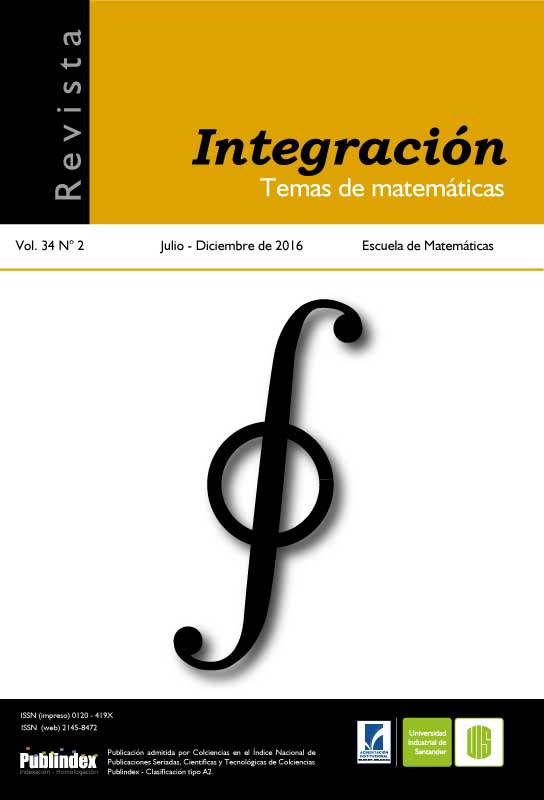Publicado 2016-12-09
Palabras clave
- Grado de Leray-Schauder,
- modelo SIR,
- órbitas periódicas,
- número reproductivo básico
Cómo citar
Derechos de autor 2016 L. Rocío González-Ramírez, Osvaldo Osuna, Geiser Villavicencio-Pulido

Esta obra está bajo una licencia internacional Creative Commons Atribución 4.0.
Resumen
En este trabajo presentamos condiciones suficientes para la existencia de soluciones periódicas en modelos epidemiológicos estacionales de tipo SIR con funciones de incidencia y de tratamiento saturados. Utilizamos la teoría de grado de Leray-Schauder para establecer la existencia de órbitas periódicas en tales modelos.
Para citar este artículo: L.R. González-Ramírez, O. Osuna, G. Villavicencio-Pulido, Oscillations in seasonal SIR models with saturated treatment, Rev. Integr. Temas Mat. 34 (2016), No. 2, 125131.
Descargas
Referencias
- Brown R.F., A topological introduction to nonlinear analysis, Second ed., Birkhäuser Boston, Inc., Boston, MA, 2004.
- Capasso V. and Serio G., "A generalization of the Kermack-McKendrick deterministic epidemic model", Math. Biosci. 42 (1978), No. 1-2, 43-61.
- Gaines R.E. and Mawhin J.L., Coincidence degree and nonlinear differential equations, Springer-Verlag, Berlin-New York, 1977.
- González-Ramírez L.R., Osuna O. and Santaella-Forero R., "Periodic orbits for seasonal SIRS models with non-linear incidence rates", Electron. J. Differential Equations 2015 (2015), No. 300, 1-10.
- Katriel G., "Existence of periodic solutions for periodically forced SIR model", J. Math. Sci. (N.Y) 201 (2014), No. 3, 335-342.
- Li L., Bai Y. and Jin Z., "Periodic solutions of an epidemic model with saturated treatment", Nonlinear Dynam. 76 (2014), No. 2, 1099-1108.
- Liu W.M., Levin S.A. and Iwasa Y., "Influence of nonlinear incidence rates upon the behaviour of SIRS epidemiological models", J. Math. Biol. 23 (1986), No. 2, 187-204.
- Song B., Du W. and Lou J., "Different types of backward bifurcations due to density-dependent treatments", Math. Biosci. Eng. 10 (2013), No. 5-6, 1651-1668.
- van den Driessche P. and Watmough J., "Reproduction numbers and sub-threshold endemic equilibria for compartmental models of disease transmission", Math. Biosci. 180 (2002), 29-48.
- Weber A., Weber M. and Milligan P., "Modeling epidemics caused by respiratory synctial virus (RSV)", Math. Biosci. 172 (2001), No. 2, 95-113.
- Xiao D. and Ruan S., "Global analysis of an epidemic model with non monotone incidence rate", Math. Biosci. 208 (2007), No. 2, 419-429.
- Zhang X. and Liu X., "Backward bifurcation of an epidemic model with saturated treatment function", J. Math. Anal. Appl. 348 (2008), No. 1, 433-443.
